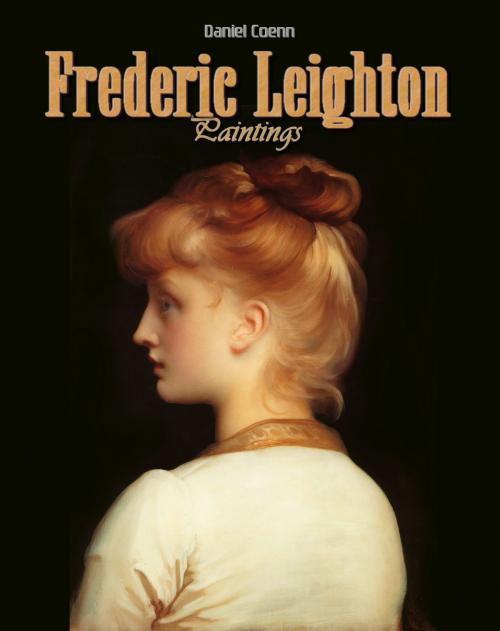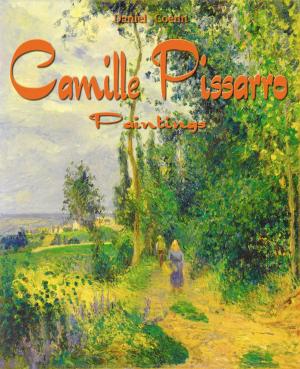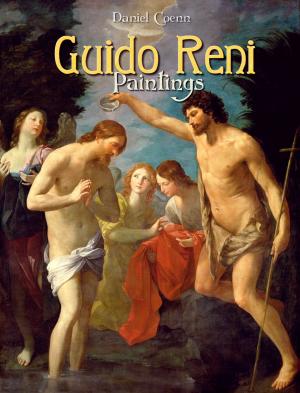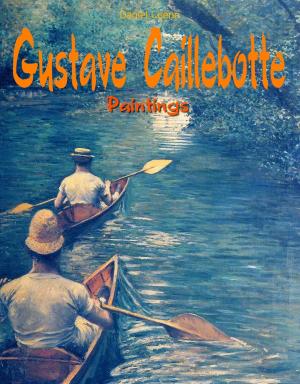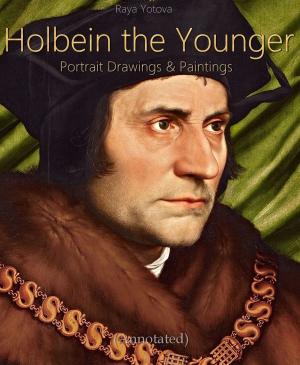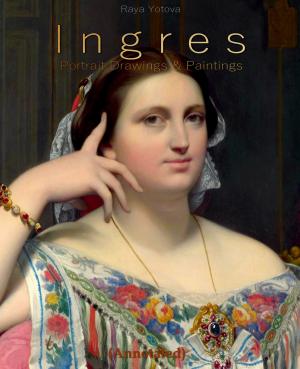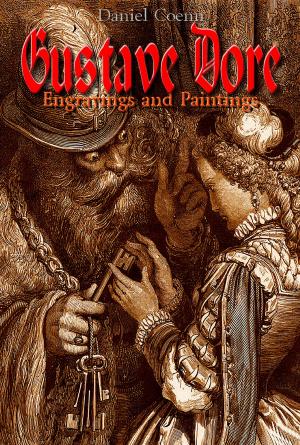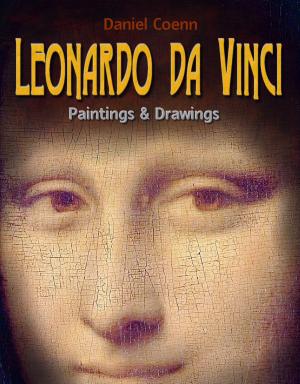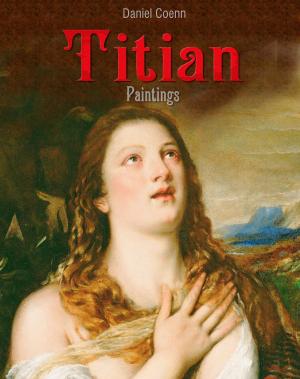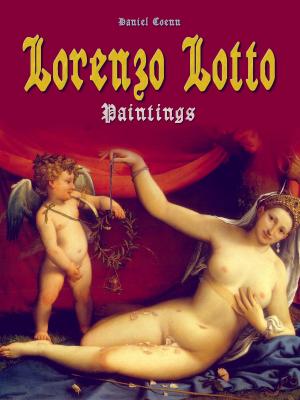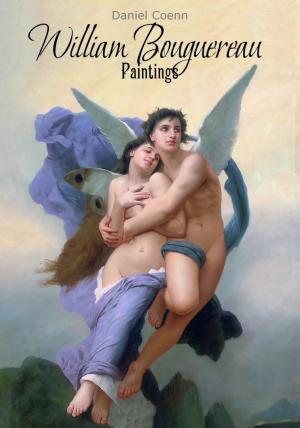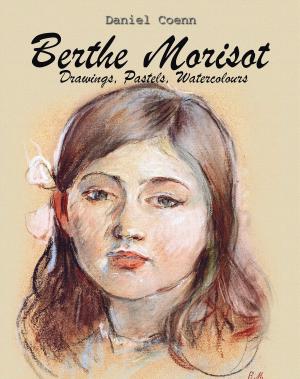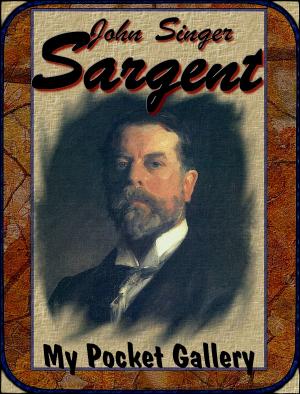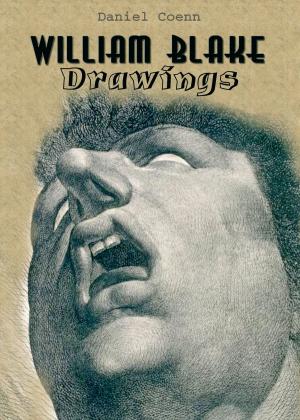Frederic Leighton
Paintings
Biography & Memoir, Artists, Architects & Photographers, Nonfiction, Art & Architecture| Author: | Daniel Coenn | ISBN: | 1230000148889 |
| Publisher: | Classic & Annotated | Publication: | July 5, 2013 |
| Imprint: | 1 | Language: | English |
| Author: | Daniel Coenn |
| ISBN: | 1230000148889 |
| Publisher: | Classic & Annotated |
| Publication: | July 5, 2013 |
| Imprint: | 1 |
| Language: | English |
Lord Frederic Leighton was one of the most famous British artists of the nineteenth century. He preferred to paint subject matter that was connected to ancient Greek and Roman mythology and intended for his paintings to be visually beautiful. Leighton's paintings have a reputation for bright colors and firmly drawn figures. Leighton's contemporaries included the French Impressionist painters and he would have seen the work of Monet, Renoir and others in both Paris and London. Leighton said of the Impressionists that 'Impressionism is a reaction from the old conventionalism, but an impressionist must not forget that it is the deep-sinking and not the fugitive impressions which are the best'. Leighton's role at the Royal Academy included the education of younger artists. His great ability for this is summed up in the words of one of his pupils; the sculptor Hamo Thornycroft wrote, 'he was the most energetic and took the greatest pains to help the students. He was, moreover, an inspiring master'.
Lord Frederic Leighton was one of the most famous British artists of the nineteenth century. He preferred to paint subject matter that was connected to ancient Greek and Roman mythology and intended for his paintings to be visually beautiful. Leighton's paintings have a reputation for bright colors and firmly drawn figures. Leighton's contemporaries included the French Impressionist painters and he would have seen the work of Monet, Renoir and others in both Paris and London. Leighton said of the Impressionists that 'Impressionism is a reaction from the old conventionalism, but an impressionist must not forget that it is the deep-sinking and not the fugitive impressions which are the best'. Leighton's role at the Royal Academy included the education of younger artists. His great ability for this is summed up in the words of one of his pupils; the sculptor Hamo Thornycroft wrote, 'he was the most energetic and took the greatest pains to help the students. He was, moreover, an inspiring master'.
Lord Frederic Leighton was one of the most famous British artists of the nineteenth century. He preferred to paint subject matter that was connected to ancient Greek and Roman mythology and intended for his paintings to be visually beautiful. Leighton's paintings have a reputation for bright colors and firmly drawn figures. Leighton's contemporaries included the French Impressionist painters and he would have seen the work of Monet, Renoir and others in both Paris and London. Leighton said of the Impressionists that 'Impressionism is a reaction from the old conventionalism, but an impressionist must not forget that it is the deep-sinking and not the fugitive impressions which are the best'. Leighton's role at the Royal Academy included the education of younger artists. His great ability for this is summed up in the words of one of his pupils; the sculptor Hamo Thornycroft wrote, 'he was the most energetic and took the greatest pains to help the students. He was, moreover, an inspiring master'.
Lord Frederic Leighton was one of the most famous British artists of the nineteenth century. He preferred to paint subject matter that was connected to ancient Greek and Roman mythology and intended for his paintings to be visually beautiful. Leighton's paintings have a reputation for bright colors and firmly drawn figures. Leighton's contemporaries included the French Impressionist painters and he would have seen the work of Monet, Renoir and others in both Paris and London. Leighton said of the Impressionists that 'Impressionism is a reaction from the old conventionalism, but an impressionist must not forget that it is the deep-sinking and not the fugitive impressions which are the best'. Leighton's role at the Royal Academy included the education of younger artists. His great ability for this is summed up in the words of one of his pupils; the sculptor Hamo Thornycroft wrote, 'he was the most energetic and took the greatest pains to help the students. He was, moreover, an inspiring master'.
Lord Frederic Leighton was one of the most famous British artists of the nineteenth century. He preferred to paint subject matter that was connected to ancient Greek and Roman mythology and intended for his paintings to be visually beautiful. Leighton's paintings have a reputation for bright colors and firmly drawn figures. Leighton's contemporaries included the French Impressionist painters and he would have seen the work of Monet, Renoir and others in both Paris and London. Leighton said of the Impressionists that 'Impressionism is a reaction from the old conventionalism, but an impressionist must not forget that it is the deep-sinking and not the fugitive impressions which are the best'. Leighton's role at the Royal Academy included the education of younger artists. His great ability for this is summed up in the words of one of his pupils; the sculptor Hamo Thornycroft wrote, 'he was the most energetic and took the greatest pains to help the students. He was, moreover, an inspiring master'.
Lord Frederic Leighton was one of the most famous British artists of the nineteenth century. He preferred to paint subject matter that was connected to ancient Greek and Roman mythology and intended for his paintings to be visually beautiful. Leighton's paintings have a reputation for bright colors and firmly drawn figures. Leighton's contemporaries included the French Impressionist painters and he would have seen the work of Monet, Renoir and others in both Paris and London. Leighton said of the Impressionists that 'Impressionism is a reaction from the old conventionalism, but an impressionist must not forget that it is the deep-sinking and not the fugitive impressions which are the best'. Leighton's role at the Royal Academy included the education of younger artists. His great ability for this is summed up in the words of one of his pupils; the sculptor Hamo Thornycroft wrote, 'he was the most energetic and took the greatest pains to help the students. He was, moreover, an inspiring master'.
Lord Frederic Leighton was one of the most famous British artists of the nineteenth century. He preferred to paint subject matter that was connected to ancient Greek and Roman mythology and intended for his paintings to be visually beautiful. Leighton's paintings have a reputation for bright colors and firmly drawn figures. Leighton's contemporaries included the French Impressionist painters and he would have seen the work of Monet, Renoir and others in both Paris and London. Leighton said of the Impressionists that 'Impressionism is a reaction from the old conventionalism, but an impressionist must not forget that it is the deep-sinking and not the fugitive impressions which are the best'. Leighton's role at the Royal Academy included the education of younger artists. His great ability for this is summed up in the words of one of his pupils; the sculptor Hamo Thornycroft wrote, 'he was the most energetic and took the greatest pains to help the students. He was, moreover, an inspiring master'.
Lord Frederic Leighton was one of the most famous British artists of the nineteenth century. He preferred to paint subject matter that was connected to ancient Greek and Roman mythology and intended for his paintings to be visually beautiful. Leighton's paintings have a reputation for bright colors and firmly drawn figures. Leighton's contemporaries included the French Impressionist painters and he would have seen the work of Monet, Renoir and others in both Paris and London. Leighton said of the Impressionists that 'Impressionism is a reaction from the old conventionalism, but an impressionist must not forget that it is the deep-sinking and not the fugitive impressions which are the best'. Leighton's role at the Royal Academy included the education of younger artists. His great ability for this is summed up in the words of one of his pupils; the sculptor Hamo Thornycroft wrote, 'he was the most energetic and took the greatest pains to help the students. He was, moreover, an inspiring master'.L
Lord Frederic Leighton was one of the most famous British artists of the nineteenth century. He preferred to paint subject matter that was connected to ancient Greek and Roman mythology and intended for his paintings to be visually beautiful. Leighton's paintings have a reputation for bright colors and firmly drawn figures. Leighton's contemporaries included the French Impressionist painters and he would have seen the work of Monet, Renoir and others in both Paris and London. Leighton said of the Impressionists that 'Impressionism is a reaction from the old conventionalism, but an impressionist must not forget that it is the deep-sinking and not the fugitive impressions which are the best'. Leighton's role at the Royal Academy included the education of younger artists. His great ability for this is summed up in the words of one of his pupils; the sculptor Hamo Thornycroft wrote, 'he was the most energetic and took the greatest pains to help the students. He was, moreover, an inspiring master'.
Lord Frederic Leighton was one of the most famous British artists of the nineteenth century. He preferred to paint subject matter that was connected to ancient Greek and Roman mythology and intended for his paintings to be visually beautiful. Leighton's paintings have a reputation for bright colors and firmly drawn figures. Leighton's contemporaries included the French Impressionist painters and he would have seen the work of Monet, Renoir and others in both Paris and London. Leighton said of the Impressionists that 'Impressionism is a reaction from the old conventionalism, but an impressionist must not forget that it is the deep-sinking and not the fugitive impressions which are the best'. Leighton's role at the Royal Academy included the education of younger artists. His great ability for this is summed up in the words of one of his pupils; the sculptor Hamo Thornycroft wrote, 'he was the most energetic and took the greatest pains to help the students. He was, moreover, an inspiring master'.
Lord Frederic Leighton was one of the most famous British artists of the nineteenth century. He preferred to paint subject matter that was connected to ancient Greek and Roman mythology and intended for his paintings to be visually beautiful. Leighton's paintings have a reputation for bright colors and firmly drawn figures. Leighton's contemporaries included the French Impressionist painters and he would have seen the work of Monet, Renoir and others in both Paris and London. Leighton said of the Impressionists that 'Impressionism is a reaction from the old conventionalism, but an impressionist must not forget that it is the deep-sinking and not the fugitive impressions which are the best'. Leighton's role at the Royal Academy included the education of younger artists. His great ability for this is summed up in the words of one of his pupils; the sculptor Hamo Thornycroft wrote, 'he was the most energetic and took the greatest pains to help the students. He was, moreover, an inspiring master'.
Lord Frederic Leighton was one of the most famous British artists of the nineteenth century. He preferred to paint subject matter that was connected to ancient Greek and Roman mythology and intended for his paintings to be visually beautiful. Leighton's paintings have a reputation for bright colors and firmly drawn figures. Leighton's contemporaries included the French Impressionist painters and he would have seen the work of Monet, Renoir and others in both Paris and London. Leighton said of the Impressionists that 'Impressionism is a reaction from the old conventionalism, but an impressionist must not forget that it is the deep-sinking and not the fugitive impressions which are the best'. Leighton's role at the Royal Academy included the education of younger artists. His great ability for this is summed up in the words of one of his pupils; the sculptor Hamo Thornycroft wrote, 'he was the most energetic and took the greatest pains to help the students. He was, moreover, an inspiring master'.
Lord Frederic Leighton was one of the most famous British artists of the nineteenth century. He preferred to paint subject matter that was connected to ancient Greek and Roman mythology and intended for his paintings to be visually beautiful. Leighton's paintings have a reputation for bright colors and firmly drawn figures. Leighton's contemporaries included the French Impressionist painters and he would have seen the work of Monet, Renoir and others in both Paris and London. Leighton said of the Impressionists that 'Impressionism is a reaction from the old conventionalism, but an impressionist must not forget that it is the deep-sinking and not the fugitive impressions which are the best'. Leighton's role at the Royal Academy included the education of younger artists. His great ability for this is summed up in the words of one of his pupils; the sculptor Hamo Thornycroft wrote, 'he was the most energetic and took the greatest pains to help the students. He was, moreover, an inspiring master'.
Lord Frederic Leighton was one of the most famous British artists of the nineteenth century. He preferred to paint subject matter that was connected to ancient Greek and Roman mythology and intended for his paintings to be visually beautiful. Leighton's paintings have a reputation for bright colors and firmly drawn figures. Leighton's contemporaries included the French Impressionist painters and he would have seen the work of Monet, Renoir and others in both Paris and London. Leighton said of the Impressionists that 'Impressionism is a reaction from the old conventionalism, but an impressionist must not forget that it is the deep-sinking and not the fugitive impressions which are the best'. Leighton's role at the Royal Academy included the education of younger artists. His great ability for this is summed up in the words of one of his pupils; the sculptor Hamo Thornycroft wrote, 'he was the most energetic and took the greatest pains to help the students. He was, moreover, an inspiring master'.
Lord Frederic Leighton was one of the most famous British artists of the nineteenth century. He preferred to paint subject matter that was connected to ancient Greek and Roman mythology and intended for his paintings to be visually beautiful. Leighton's paintings have a reputation for bright colors and firmly drawn figures. Leighton's contemporaries included the French Impressionist painters and he would have seen the work of Monet, Renoir and others in both Paris and London. Leighton said of the Impressionists that 'Impressionism is a reaction from the old conventionalism, but an impressionist must not forget that it is the deep-sinking and not the fugitive impressions which are the best'. Leighton's role at the Royal Academy included the education of younger artists. His great ability for this is summed up in the words of one of his pupils; the sculptor Hamo Thornycroft wrote, 'he was the most energetic and took the greatest pains to help the students. He was, moreover, an inspiring master'.
Lord Frederic Leighton was one of the most famous British artists of the nineteenth century. He preferred to paint subject matter that was connected to ancient Greek and Roman mythology and intended for his paintings to be visually beautiful. Leighton's paintings have a reputation for bright colors and firmly drawn figures. Leighton's contemporaries included the French Impressionist painters and he would have seen the work of Monet, Renoir and others in both Paris and London. Leighton said of the Impressionists that 'Impressionism is a reaction from the old conventionalism, but an impressionist must not forget that it is the deep-sinking and not the fugitive impressions which are the best'. Leighton's role at the Royal Academy included the education of younger artists. His great ability for this is summed up in the words of one of his pupils; the sculptor Hamo Thornycroft wrote, 'he was the most energetic and took the greatest pains to help the students. He was, moreover, an inspiring master'.L
